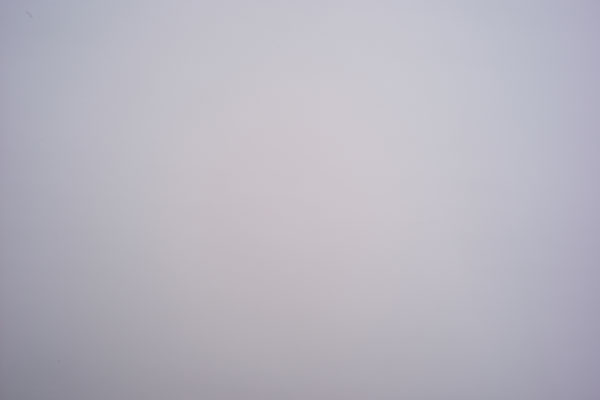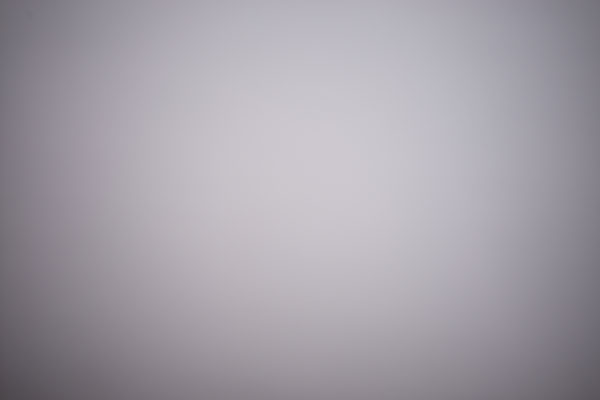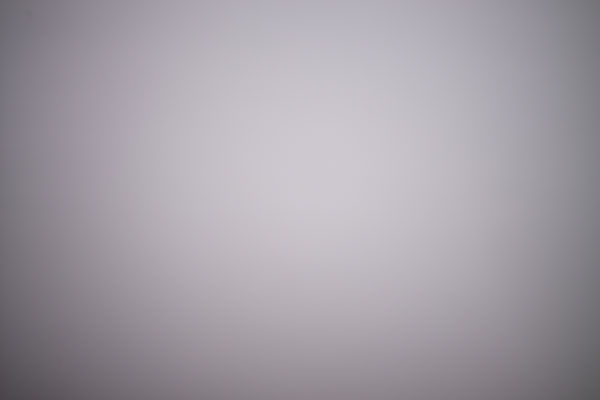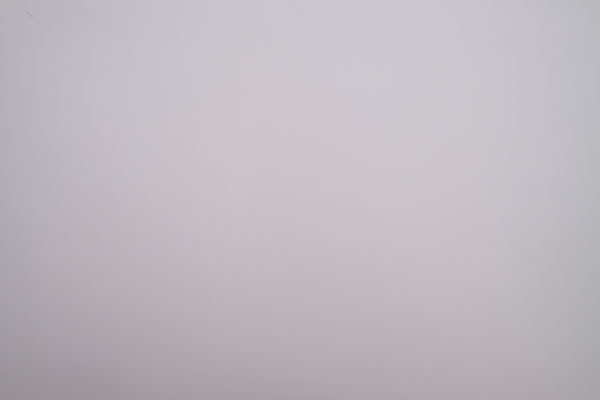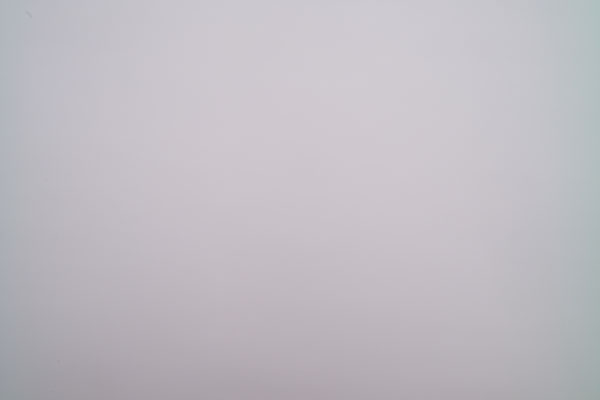Leica M (Typ 240): Minolta Rokkor 28mm f/2.8
Another Acquisition for the M-Mount Unit | Body with Lens Attached | Some Technical Data | Color Shading and Vignetting | Sample Images | Close-Up Behavior | Conclusions | Links
Archive
I bought most of my M-mount (and M39) lenses for use with the Ricoh GXR M-mount expansion unit, at which they are used with a crop factor of 1.5 x. But I always wanted to also use these lenses "as intended" and was therefore looking for a full-frame camera body for quite some time. Finally, at the end of October 2015, I purchased a used Leica M (Typ 240) as the "body" for my M-mount lenses. On these pages you can find my first personal experiences with the lenses at the Leica M (Typ 240). This page is devoted to the Minolta M-Rokkor 28mm f/2.8 lens.
All lens pages: Voigtländer 15mm f/4.5 | Voigtländer 15mm f/4.5 III | Zeiss Biogon 21mm f/4.5 | Leica Elmarit-M 21mm f/2.8 ASPH. | Leica Elmar-M 24mm f/3.8 ASPH. | Voigtländer 25mm f/4 (M39) | Minolta M-Rokkor 28mm f/2.8 | Zeiss Biogon 35mm f/2.8 | Zeiss Sonnar 50mm f/1.5 | Voigtländer 75mm f/2.5 (M39) | Leitz Hektor 85mm f/2.5 (M39) | Leitz Elmar-C 90mm f/4 | Leitz Tele-Elmarit-M 90mm f/2.8 | Leitz Tele-Elmar 135mm f/4
| Note: I took my Leica M (Typ 240) out of service in the beginning of July, 2024 and sold it in January 2025. I therefore can no longer report any experiences with this camera and the respective lenses here. The Minolta M-Rokkor 28mm f/2.8 was also one of the first lenses that I departed from - I gave it away to a friend of mine. |
Another Acquisition for the M-Mount Unit
I bought a used Minolta M-Rokkor 28mm f/2.8 lens at Ebay (from a dealer at a fixed price) at the beginning of April 2013. It was meant to close the gap between 21 mm and 35 mm, which it fits in exactly with its focal length of 28 mm. About a year later, I bought another lens: a Voigländer Snapshot-Skopar 25mm f/4, that, with its focal lenght of 37.5 mm equivalent, more closely matches a classic 35 mm lens than the Rokkor at the Ricoh GXR M-mount expansion unit. At the Leica M (Typ 240), however, the 28 mm focal length is more or less "ideal" for me.
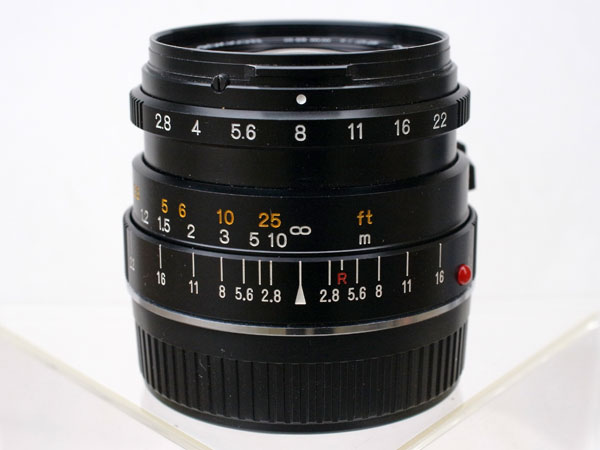 |
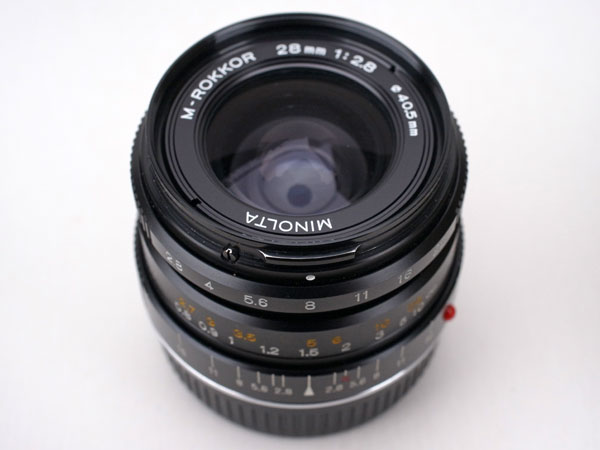 |
Photos: Arrived on April 4, 2013, a Minolta M-Rokkor 28m f/2.8 lens
The Minolta M-Rokkor 28mm f/2.8 lens was developed for the Minolta CLE, the successor to the Leica/Minolta CL, in the early 1980s. Because Leitz discontinued the CL, there is no Leitz version of this lens. It is a genuine lens calculation done by Minolta, not a revision of a Leitz lens, and it has been praised for its image quality. It is, in a way, a companion to the Leitz Elmar-C 90mm f/4 mm that I also own (its Minolta counterpart was the only Japanese lens that was ever built in Germany).
The Minolta CLE was sold between 1981 and 1985, so my Minolta M-Rokkor 28mm f/2.8 sample should be from this period.
A Short Story About White Spots...
The Minolta M-Rokkor 28mm f/2.8 has, on the one hand, a good reputation for its image quality, and, on the other hand, is infamous for the "white spots" problem (see photo below). It can also have issues with haze. I therefore looked a little bit around on the Internet to learn more about these issues.
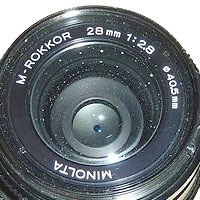
Photo: Sample of the Minolta M-Rokkor 28 with white spots (from the Internet, adapted)
White spots typically appeared after a few months and are caused by the glue that was used in the lens. Some sources state that humidity may also let the spots appear.
Minolta repaired defective samples at not cost in the 1980s. It is open whether they still deliver this service - and Minolta does regrettably no longer exist. But there seems to be a technician in the Netherlands who still repairs Minolta M-Rokkor lenses. But this requires some effort and is therefore quite expensive. In cases of severe damages he even seems to refuse the repair because of the effort and cost. Many users report that white spots usually do not degrade image quality and that after a repair there was no noticeable improvement in image quality. Therefore, the best strategy is probably to do nothing as long as the image quality is OK. Haze seems to be a bigger problem to image quality, and there were several reports on this issue in the Internet as well (often both issues go together...).
Anyway, If you should consider buying this otherwise nice lens, you should make sure that your sample does not have white spots (some dealers point this out in their ads, while others do not...). A few small spots should not have negative effects on image quality though...
When I bought the lens in 2013, the lens seemed to have no white spots. When I took another look at it in 2015, it showed spots on a metal surface, which do not seem to degrade the image quality.
Body with Lens Attached
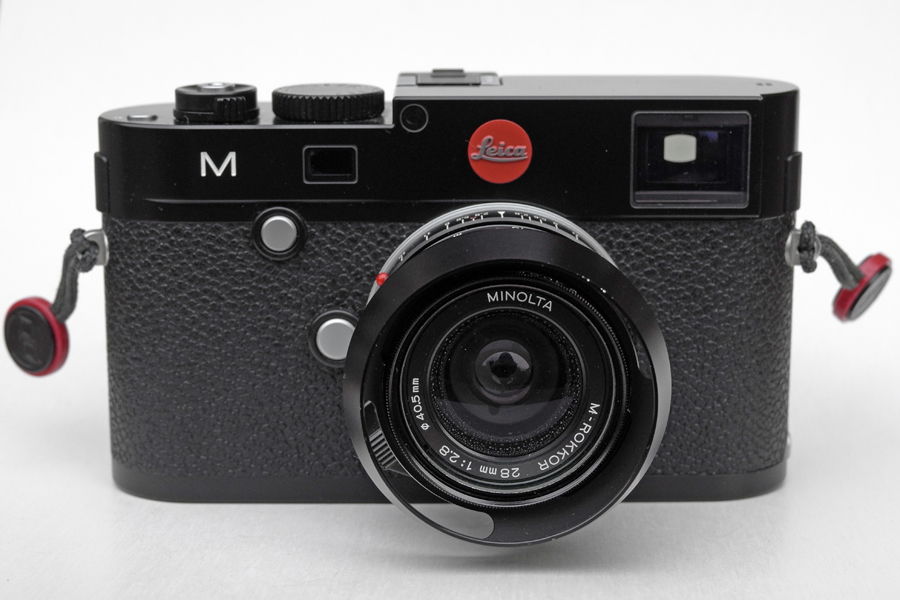 |
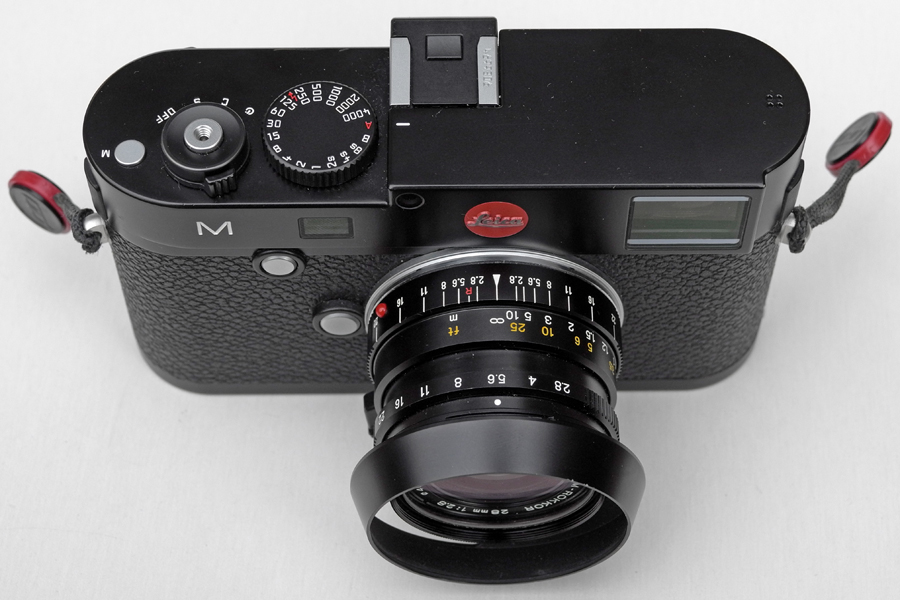 |
|
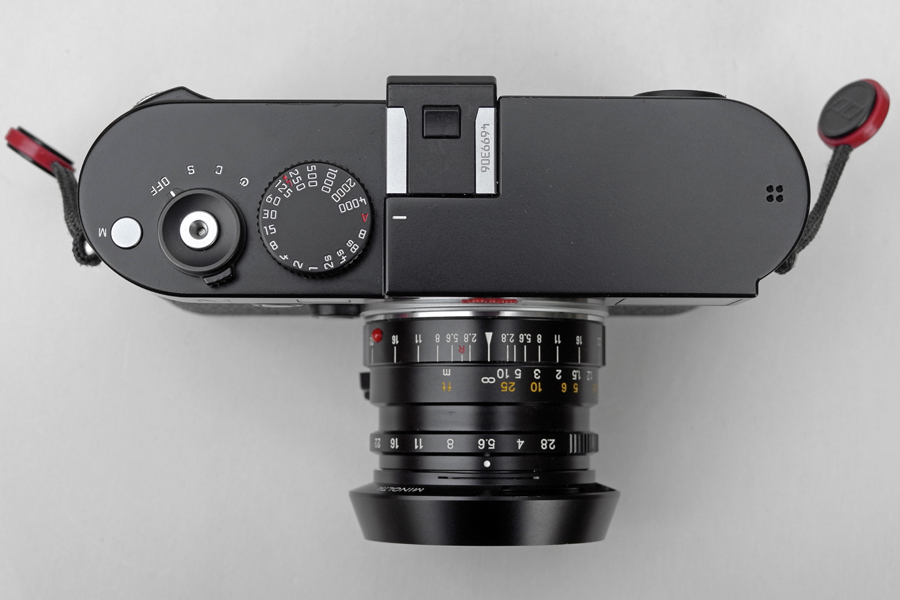 |
Photos: Leica M (Typ 240) with Minolta M-Rokkor 28mm f/2.8 lens
Some Technical Data
| Focal length | 28 mm |
| Angle of view (35mm film) | 75° diagonal |
| Maximum aperture | 2.8 |
| f-stop range | 2.8-22 |
| Number of iris blades | 10? |
| Number of lenses/groups | 7/5 |
| Shortest distance | 0.8 m |
| Weight | 155 g |
| Length | 35.5 mm |
| Maximum diameter | 51 mm |
| Filter thread | 40.5 mm |
| Lens hood | yes, see photo above (bayonet) |
| Smallest object field / magnification | 951 x 634 mm / 1:26.6 (calculated); 829 mm / 1:23.2 (from photo) |
Color Shading and Vignetting
In March 2016, I came across a list that Zeiss had published for its M-mount lenses, in which they judged how well certain Leitz/Leica lens profiles fit their lenses. Therefore, I did a new evaluation, which included most of my wide angle lenses, and thus, my Minolta M-Rokkor 28mm f/2.8. In the table below, I present only the results from this newer investigation.
Photos: Calibration shots with Minolta M-Rokkor 28mm f/2.8
The overall color shading is very low, although I observed it in some real-word photos. Vignetting is visible wide open, but may not matter in real-world shots. The manual settings change the color cast slightly and improve vignetting a bit. Selecting the setting for the ASPH. version of the Elmarit-M 28mm f/2.8 leads to a slightly green color cast, whereas the versions (III) and (IV) of the lens lead to nearly identical results with practically no color cast (the IV shows a greenish tint in this test). The Summicron-M 1:2/28 ASPH. seems to be comparable to the (IV) version. At the moment, I prefer the results of version (III) for the M-Rokkor.
Conclusion: This lens can be used with "Lens Detection" set
to "Off" or to "Manual" with selecting the Elmarit-M 28mm
f/2.8 (III).
My current status: "Lens Detection" set to "Off",
but I will check whether selecting the Elmarit-M 28mm f/2.8 (III) manually
leads to better results in real-world shots.
Sample Images
Below are first samples taken with the Minolta M-Rokkor 28mm f/2.8 lens (click the images to view the unprocessed original files in a new window). No color shading correction was done for these photos.
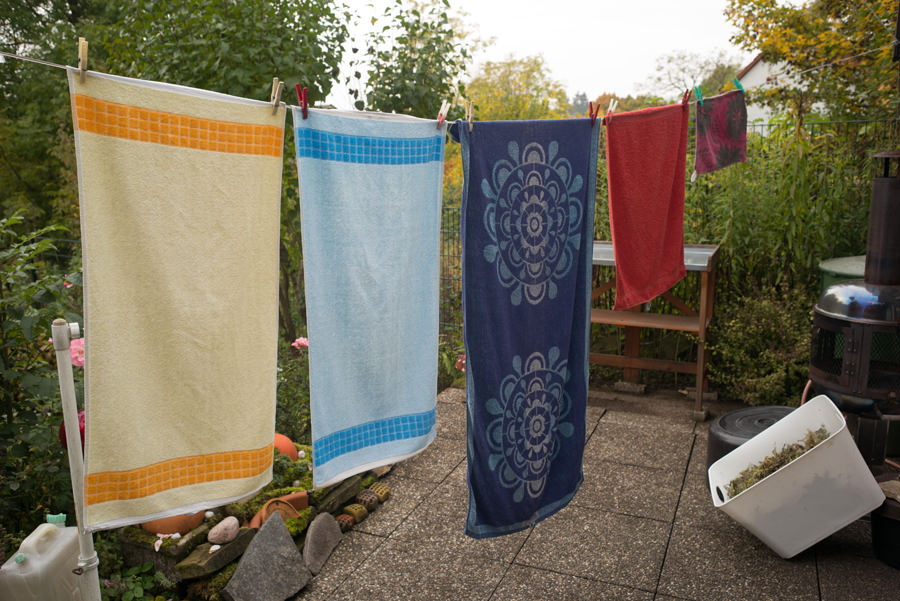 |
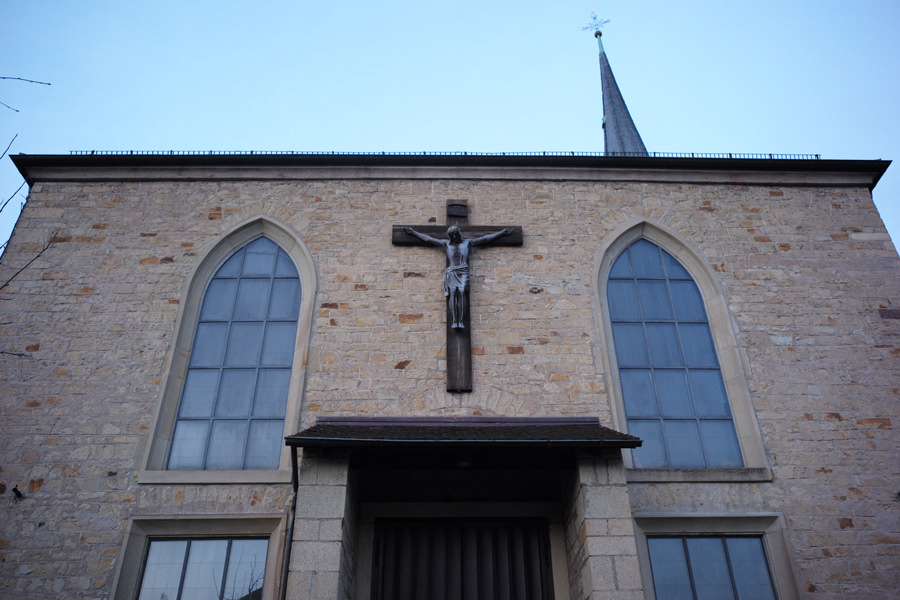 |
|
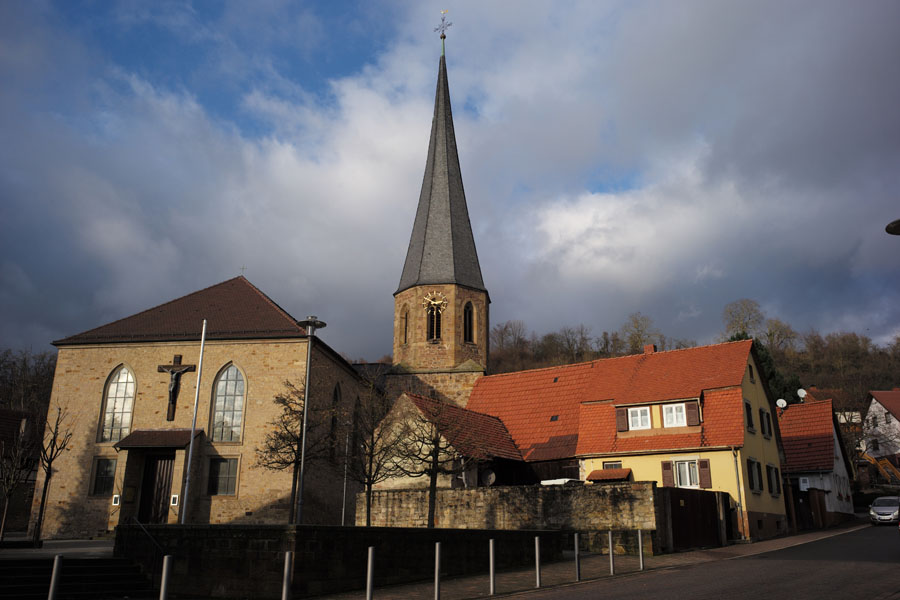 |
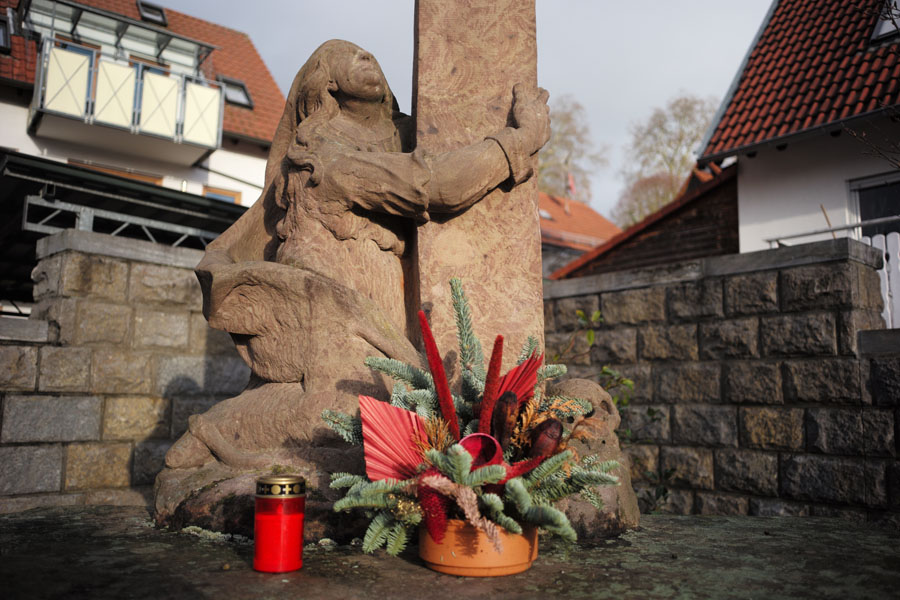 |
|
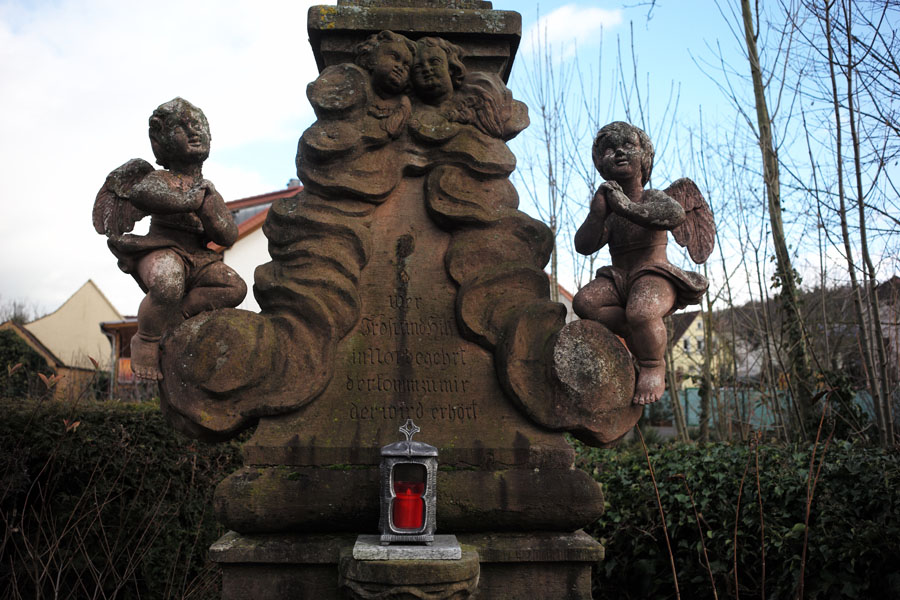 |
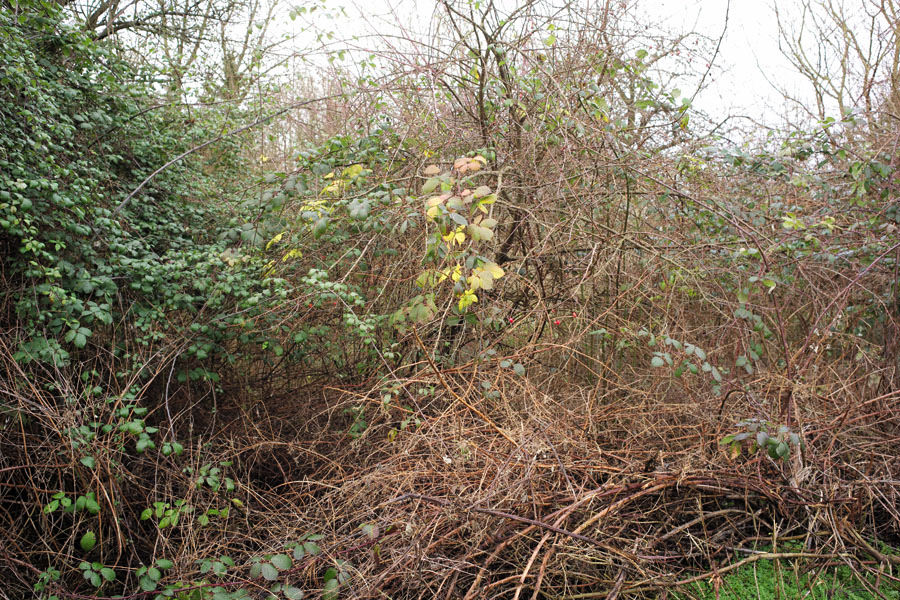 |
|
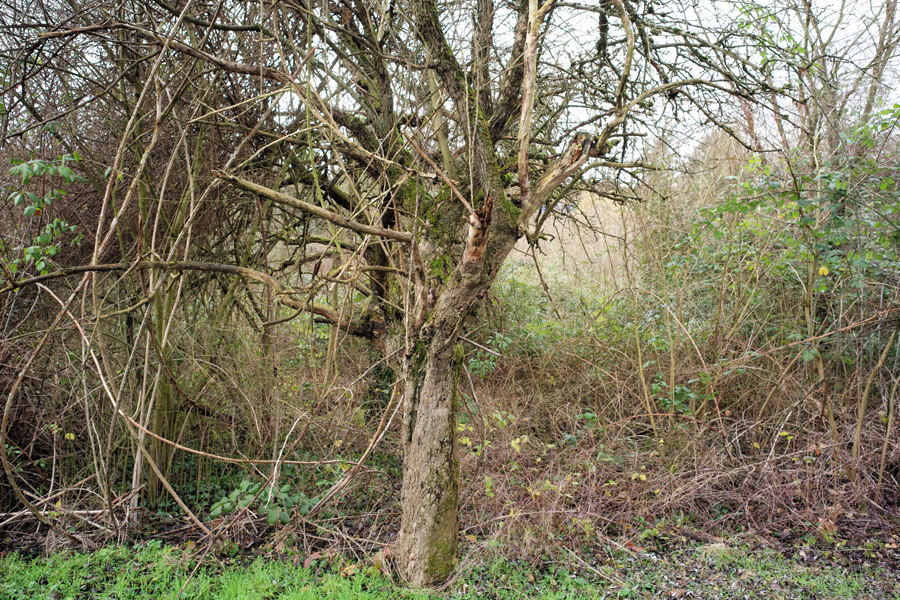 |
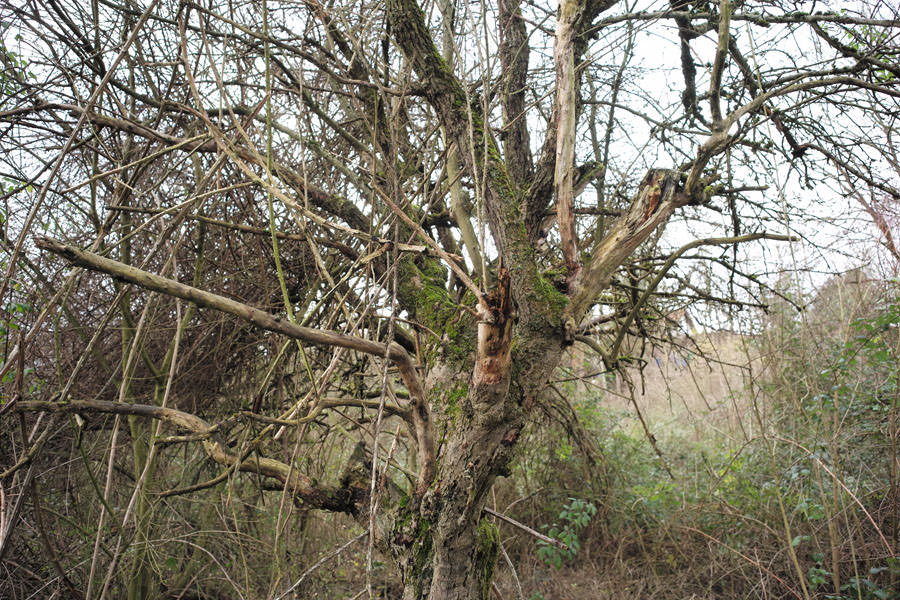 |
|
 |
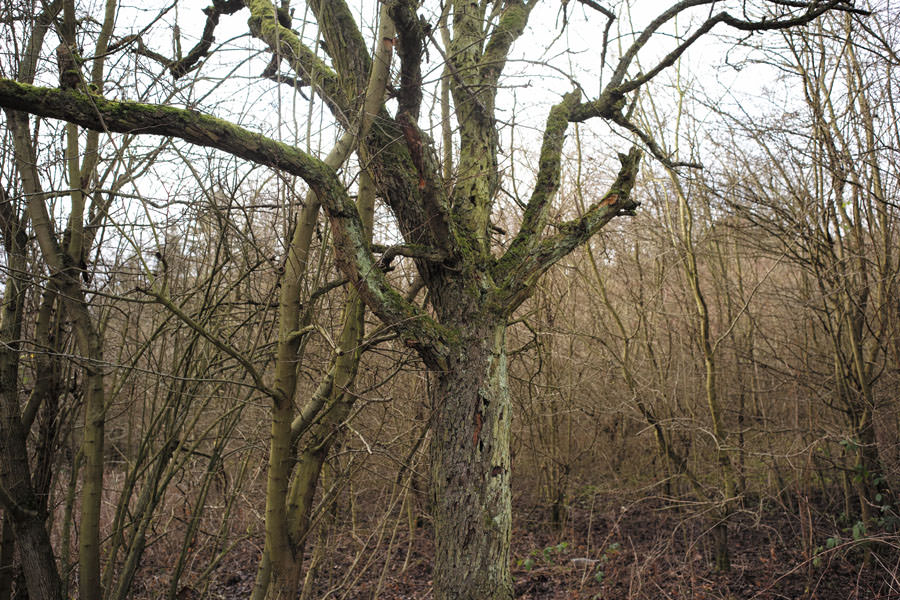 |
|
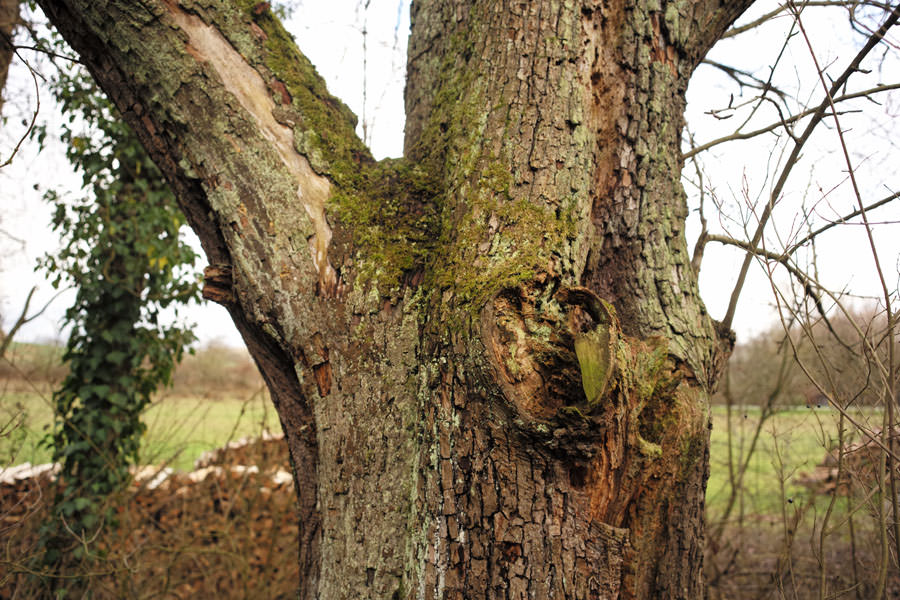 |
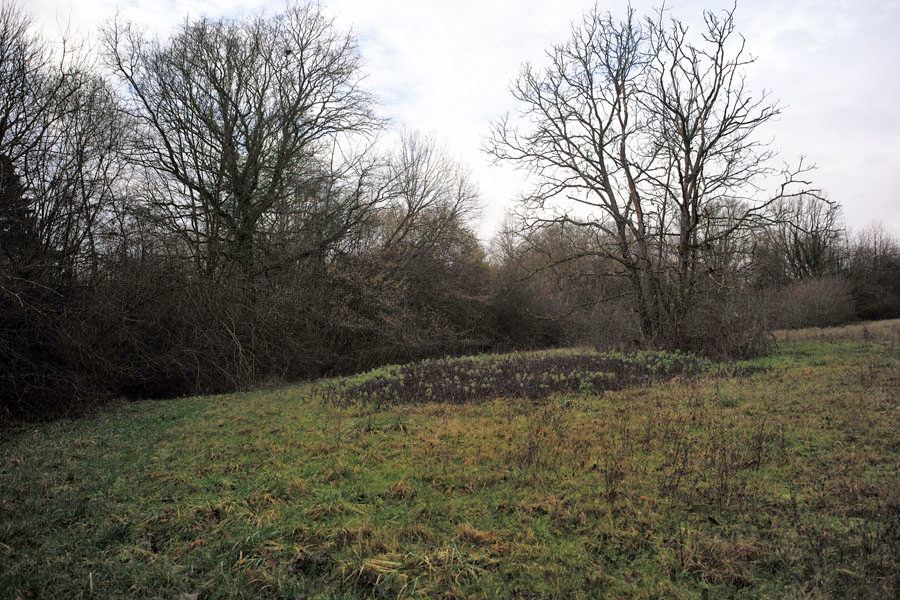 |
|
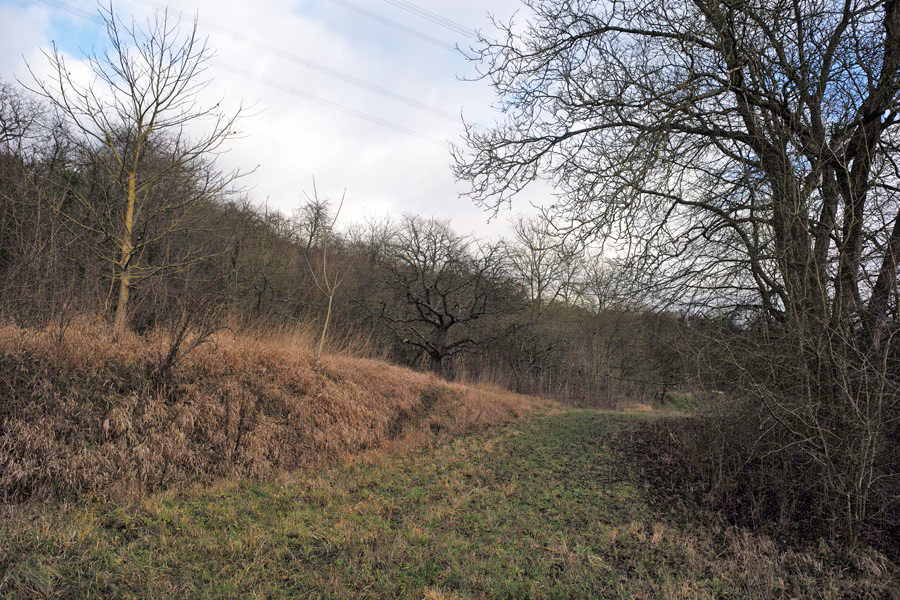 |
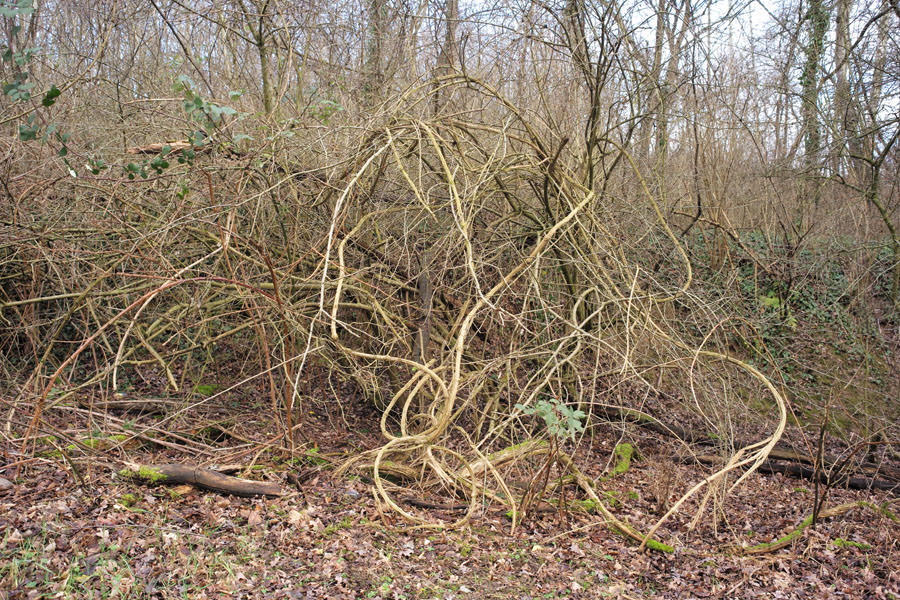 |
|
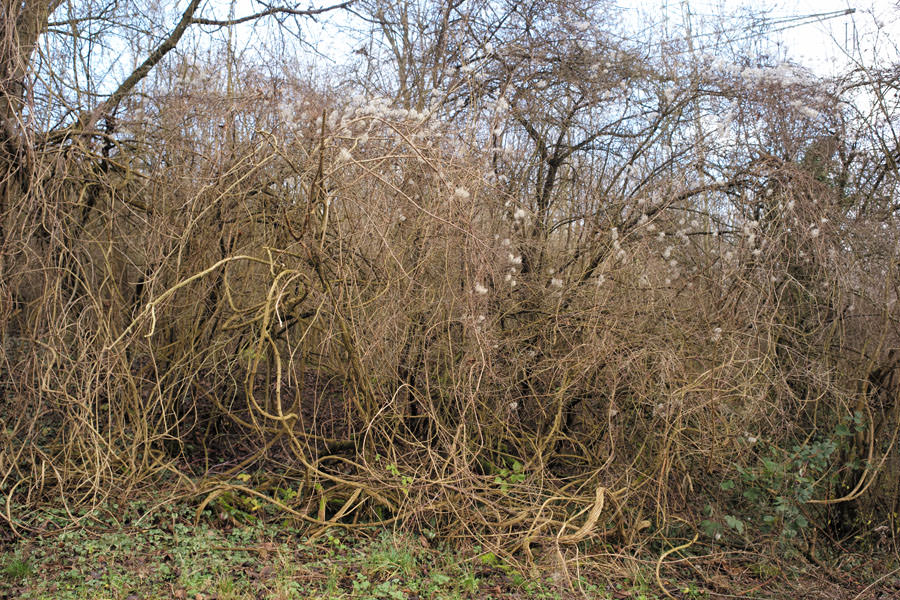 |
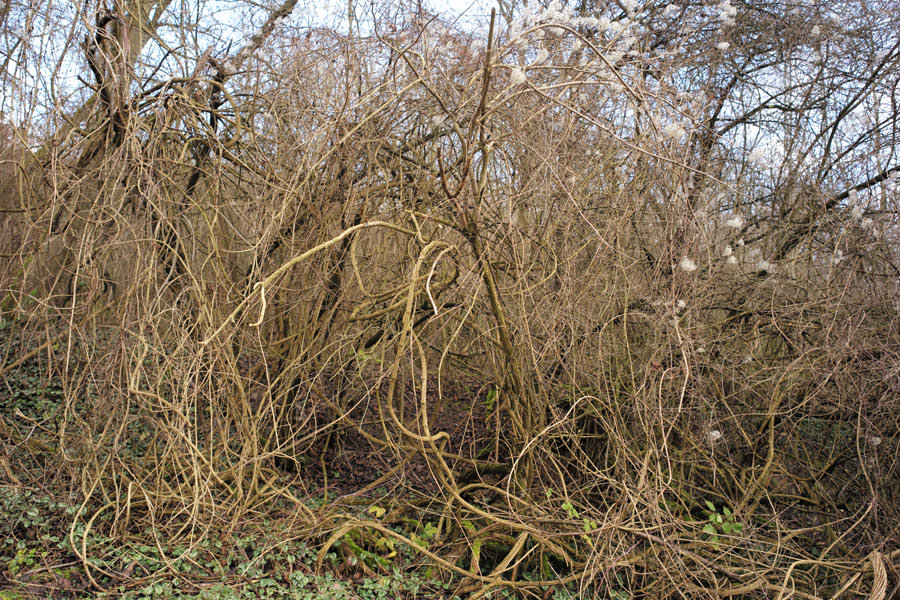 |
|
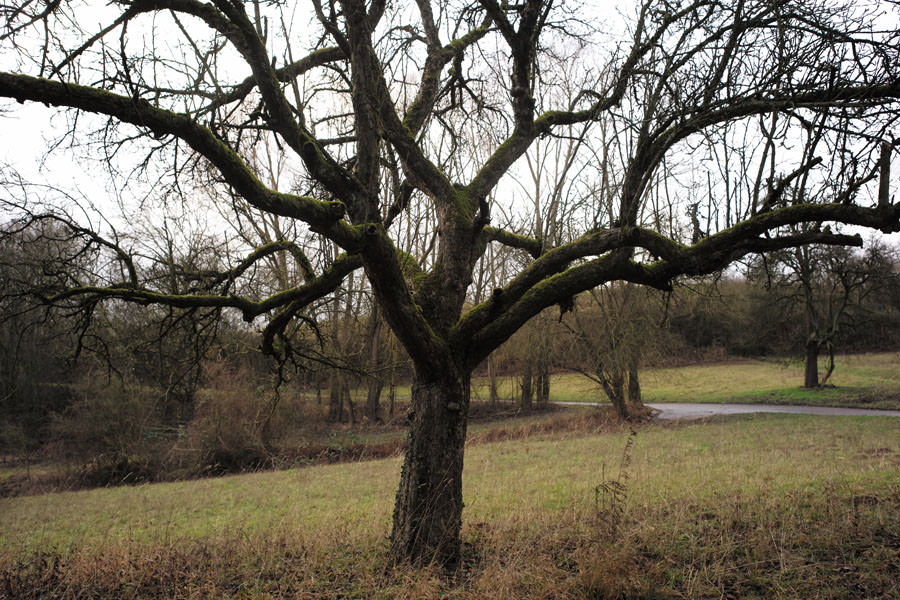 |
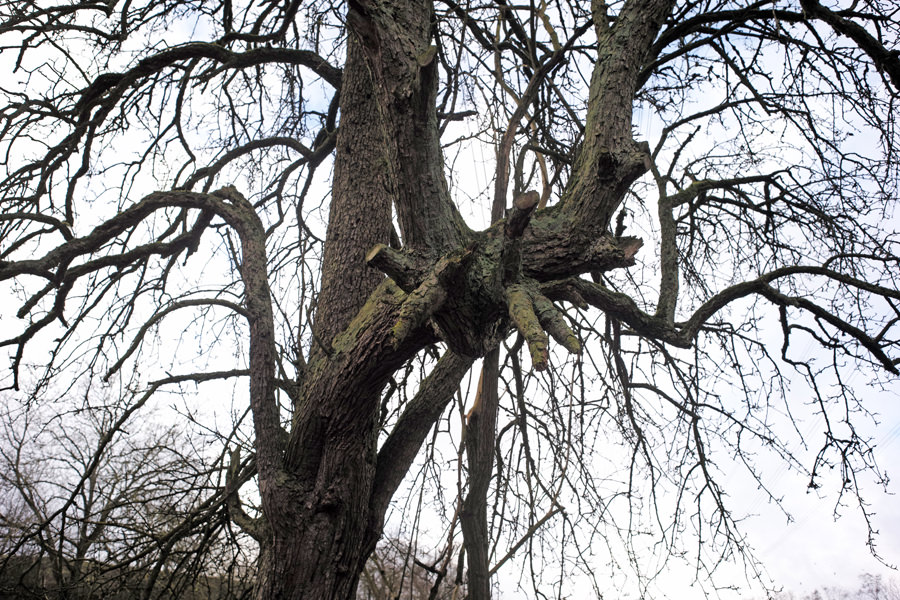 |
|
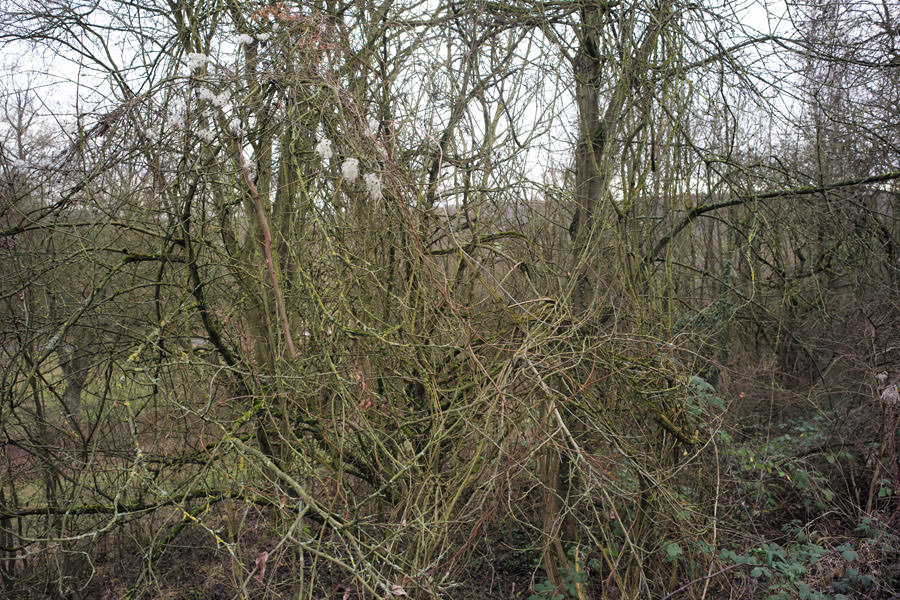 |
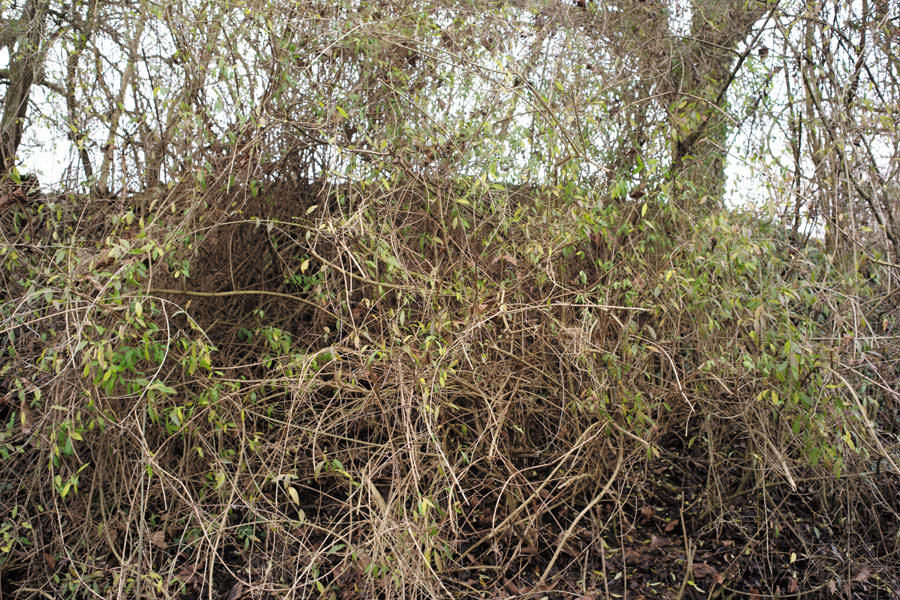 |
|
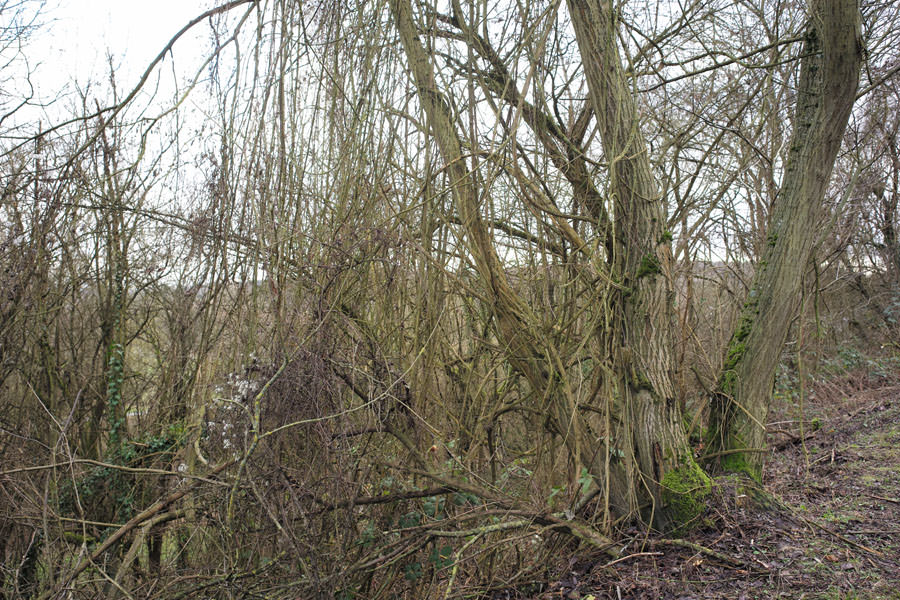 |
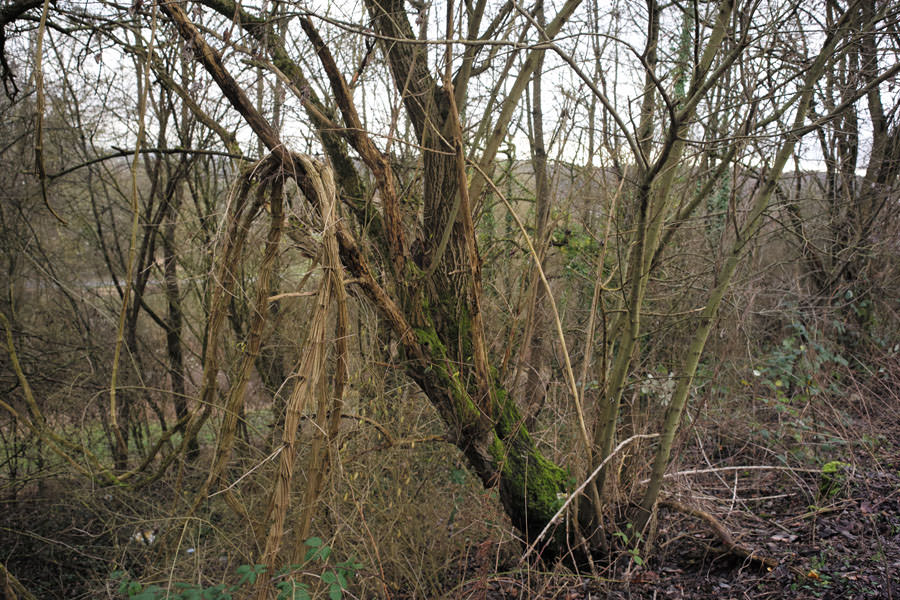 |
|
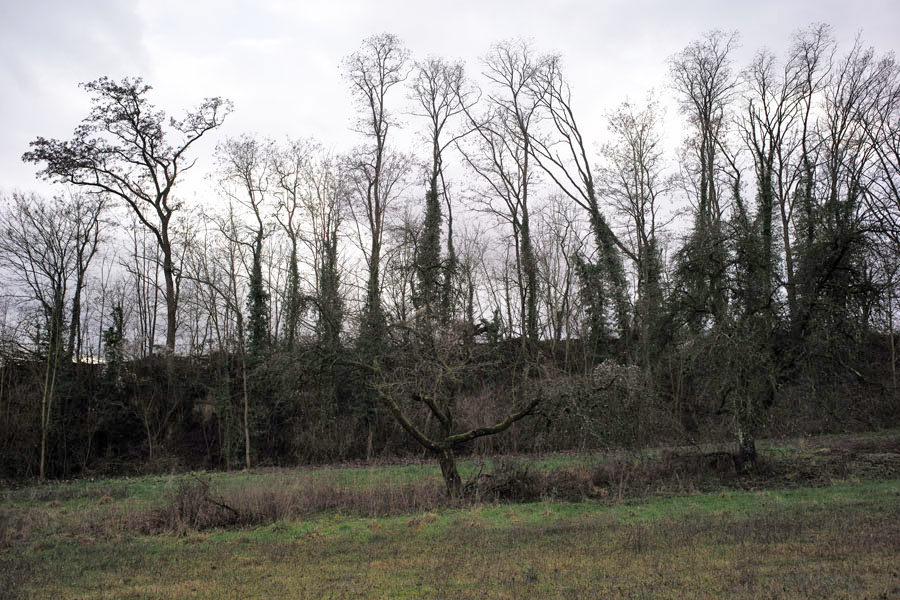 |
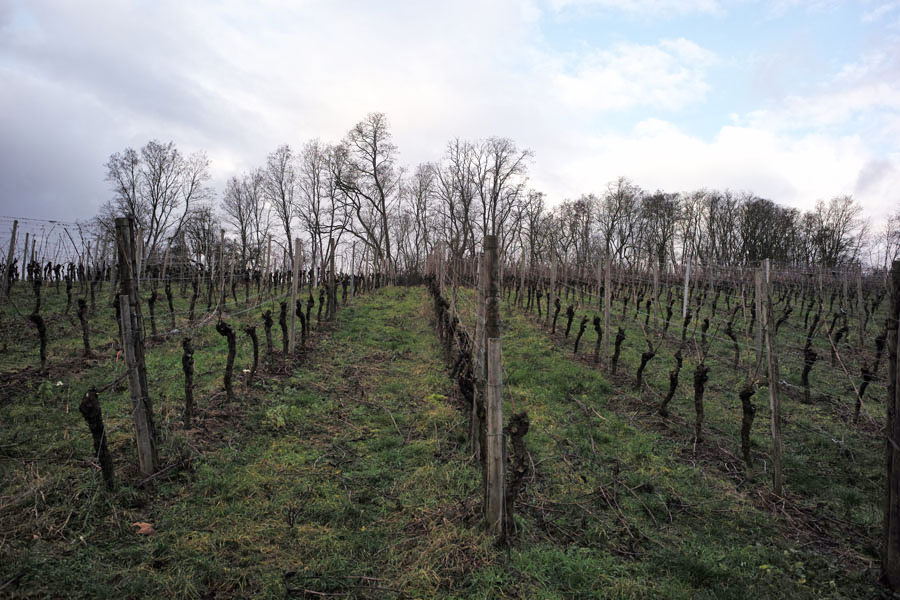 |
|
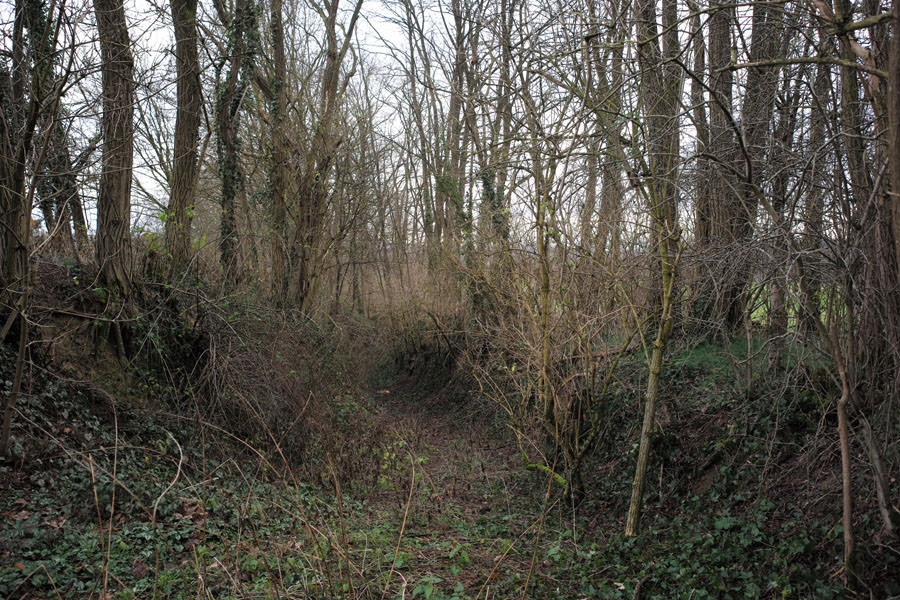 |
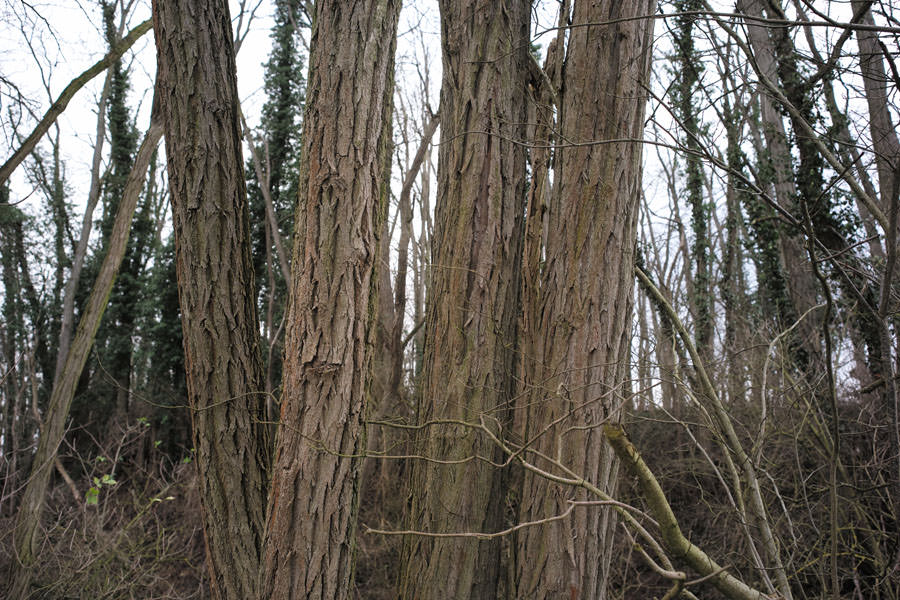 |
|
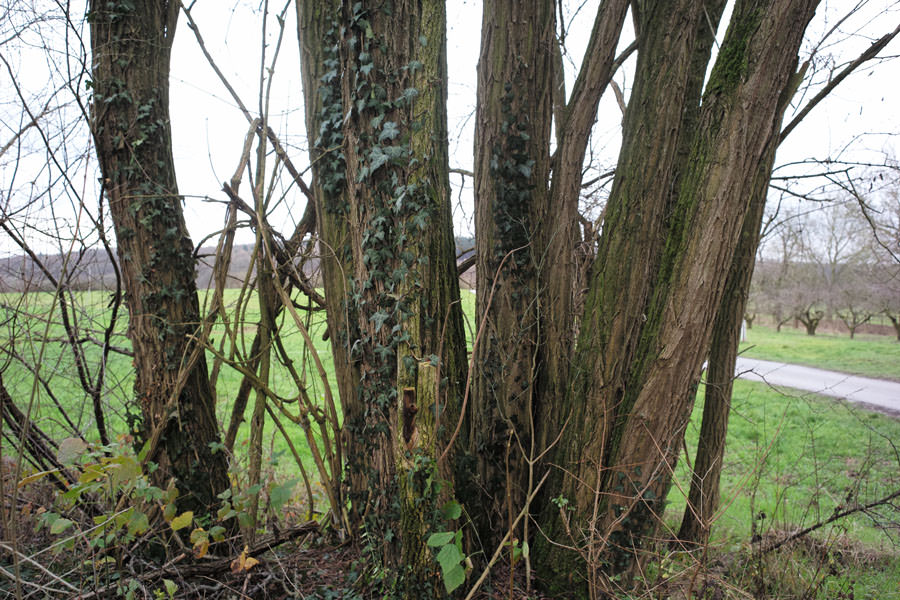 |
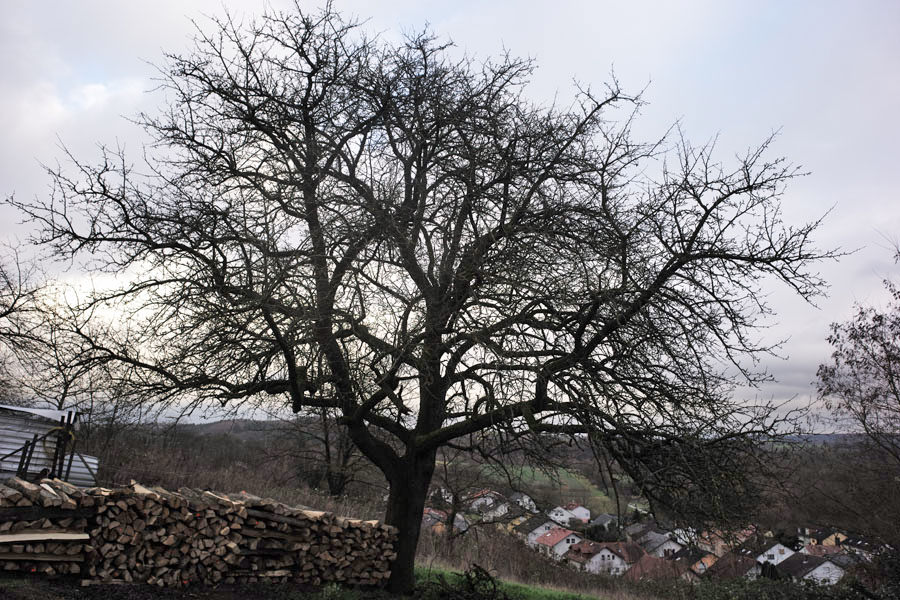 |
|
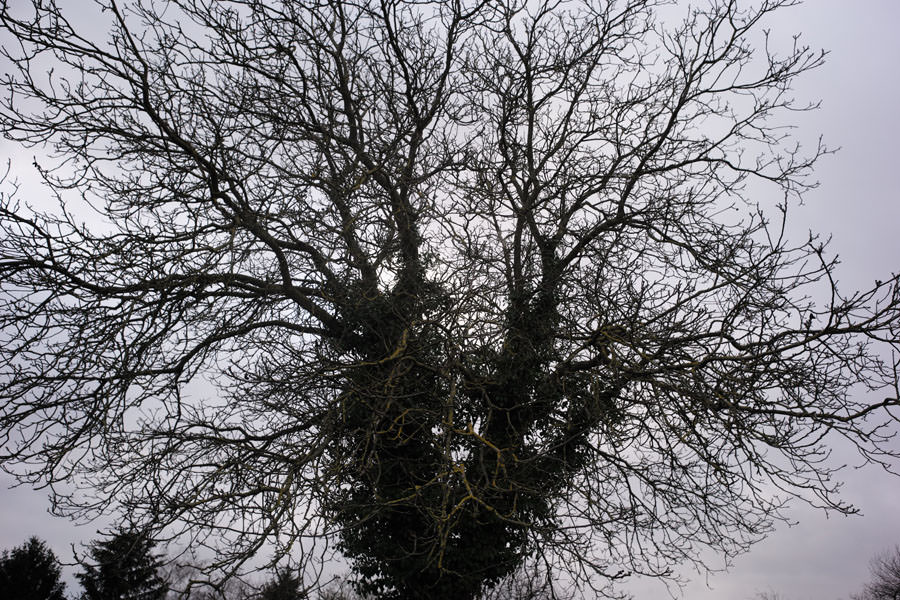 |
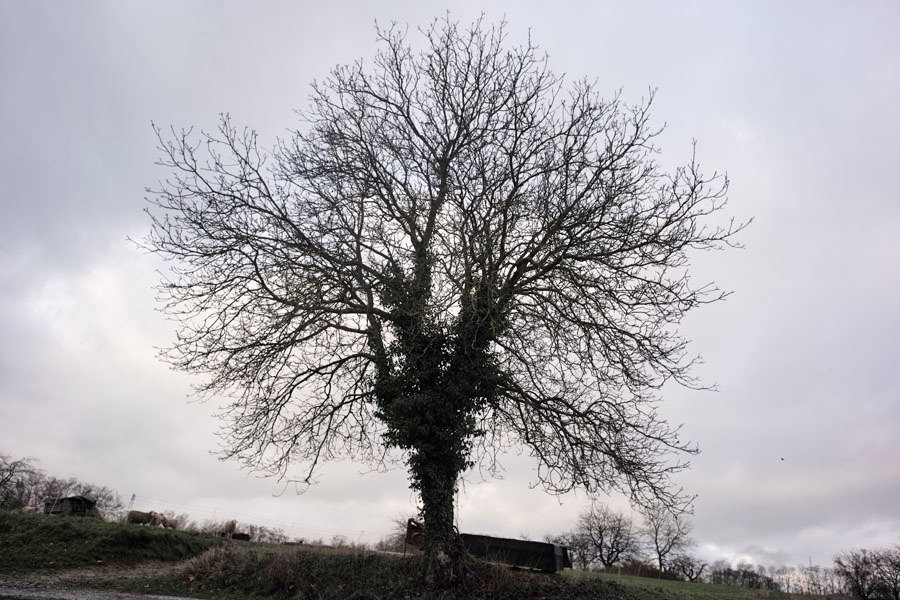 |
|
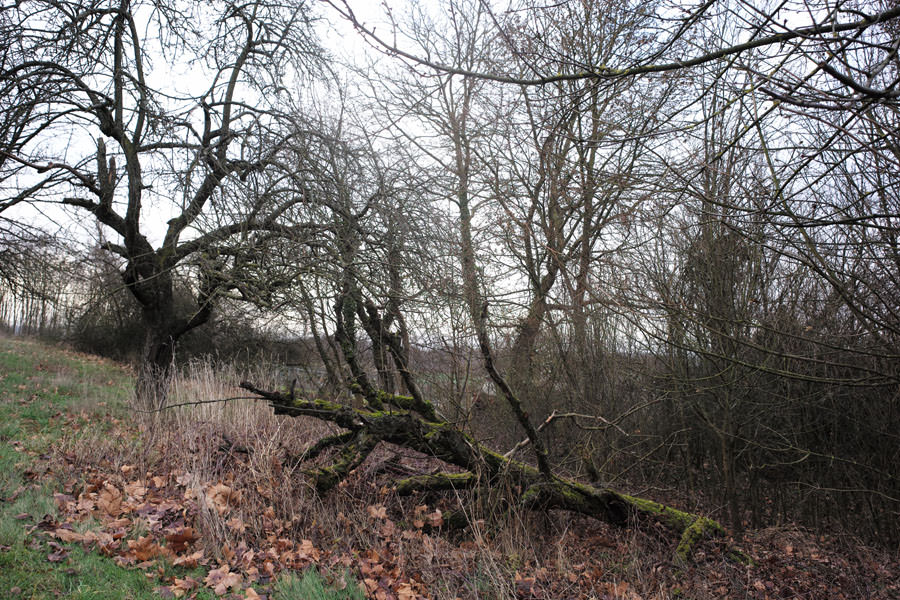 |
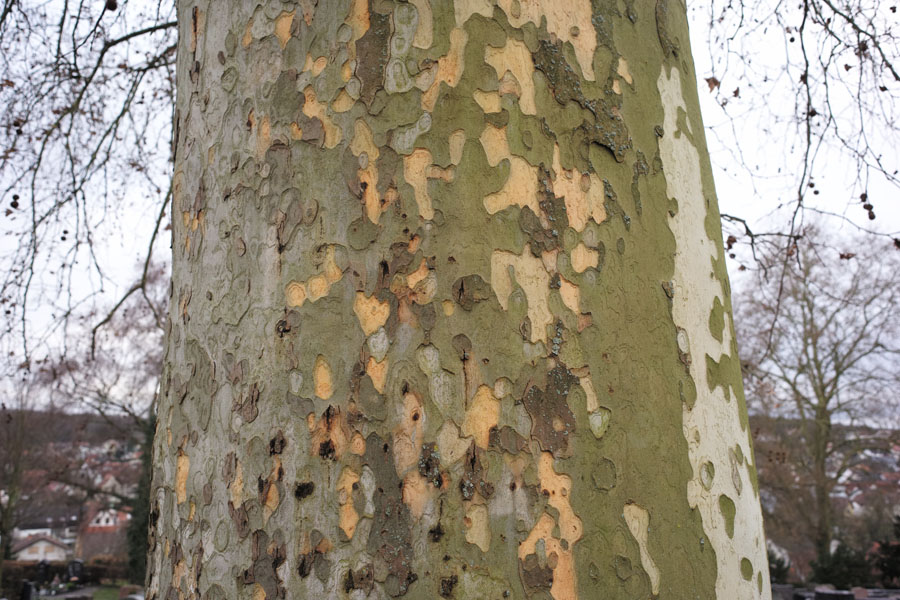 |
Close-Up Behavior
Smallest Object Field / Magnification
| Smallest object field/width | 951 mm x 634 mm (calculated), 829 mm (from photo*) |
| Magnification | 1:26.6 (calculated), 1:23.2 (from photo*) |
*) See photo below:
w = 829 mm; magnification = 35.8/829 = 1:23.2 (1:23)
Photo: Minolta M-Rokkor 28mm f/2.8 lens (829 mm)
With Quenox Quenox Extension Tube for Leica M
Distance > |
Infinity | 0.8 m (closest) |
Smallest object width |
103 mm* | 93 mm* |
| Magnification | 0.35 = 1:2.9 => approx. 1:3 | 0.385 = 1:2.6 => approx. 1:2.5 |
*) See photos below:
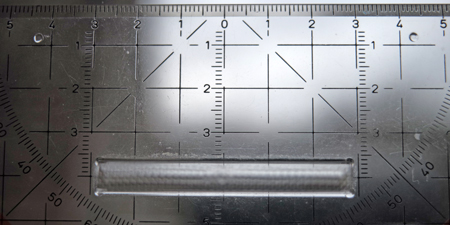 |
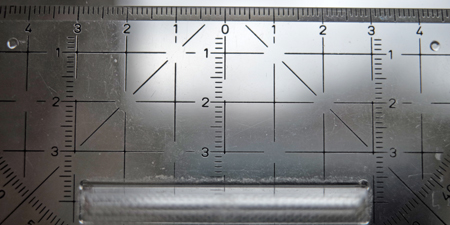 |
Photos: Test shots with Minolta M-Rokkor 28mm f/2.8 and Quenox Extension Tube for Leica M; distance set to infinity (left) or closest distance (right)
Closest Distance
The following photos are meant to demonstrate the lens' close-up behavior:
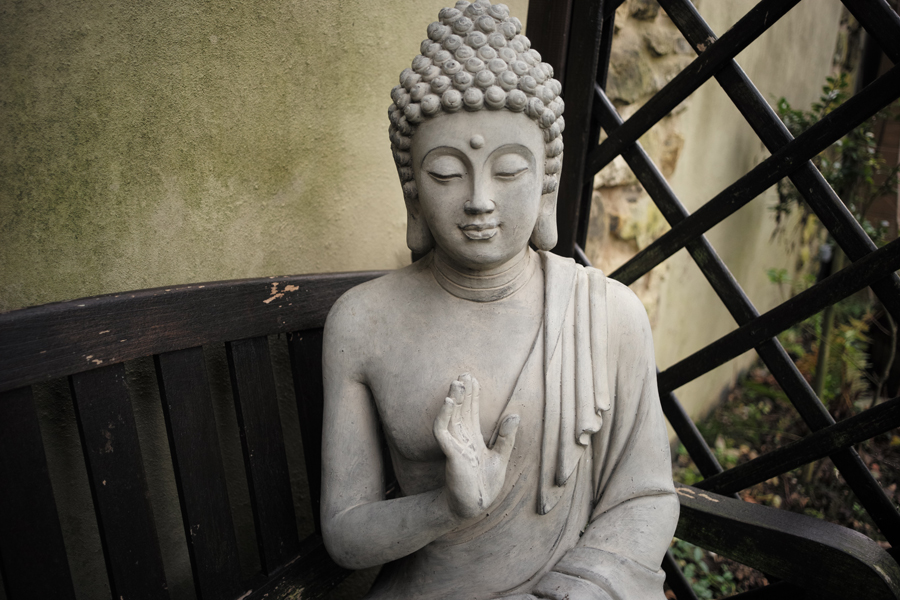 |
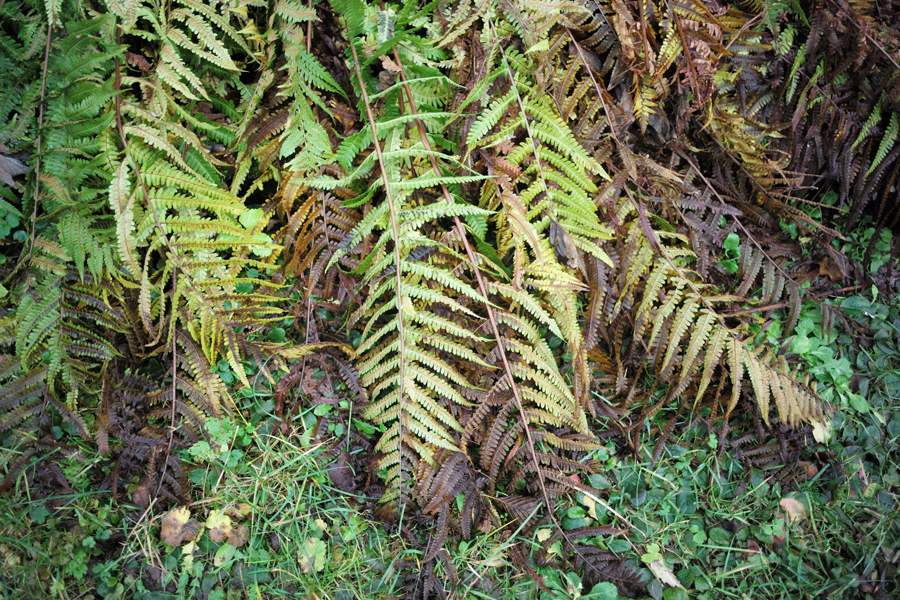 |
As a wide angle lens, the Minolta M-Rokkor 28mm f/2.8 lens is not a "winner" in the close-up realm. This improves, however, dramatically if you use an extension tube like the Quenox Extension Tube for Leica M, which is a replacement for the now "extinct" Leitz OUFRO (16469Y) (1 cm). You get a magnification of up to 1:2.5 with this lens, but you have to get fairly close to the subject...
Here is a sample taken with the Quenox extension tube (no files in original size):
 |
Minolta M-Rokkor 28mm f/2.8 |
And here are some more samples that I took with other lenses in a similar way:
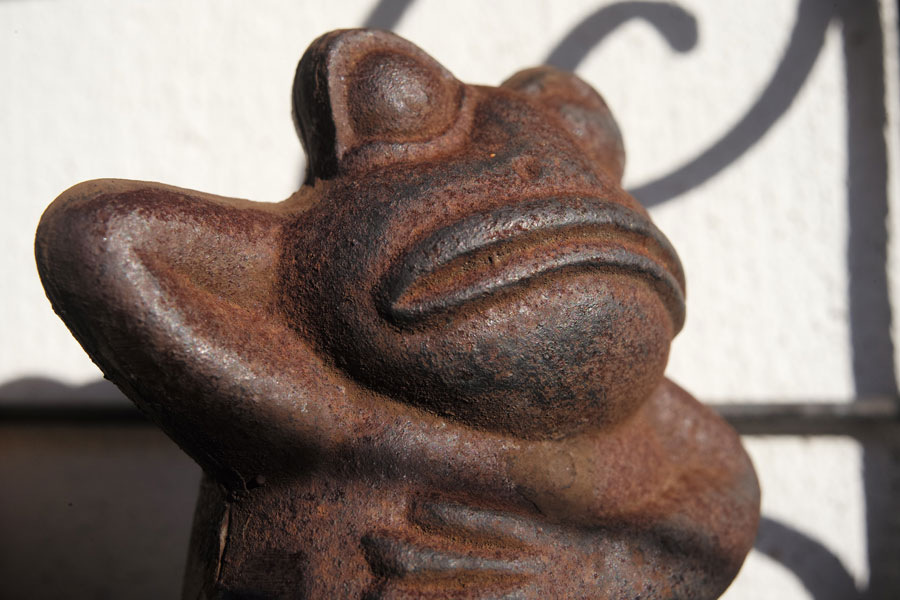 |
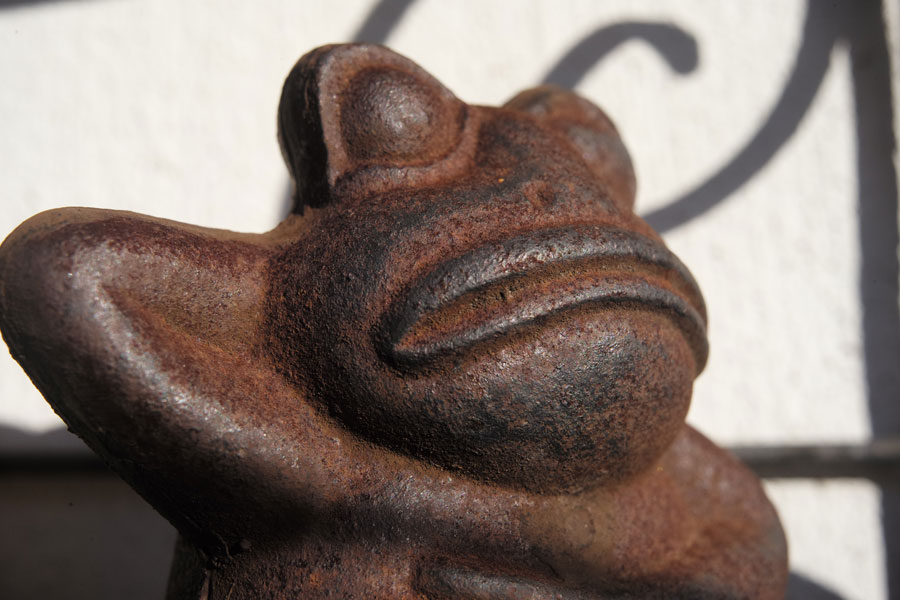 |
|
| Distance set to infinity | Distance set to closest value |
|
 |
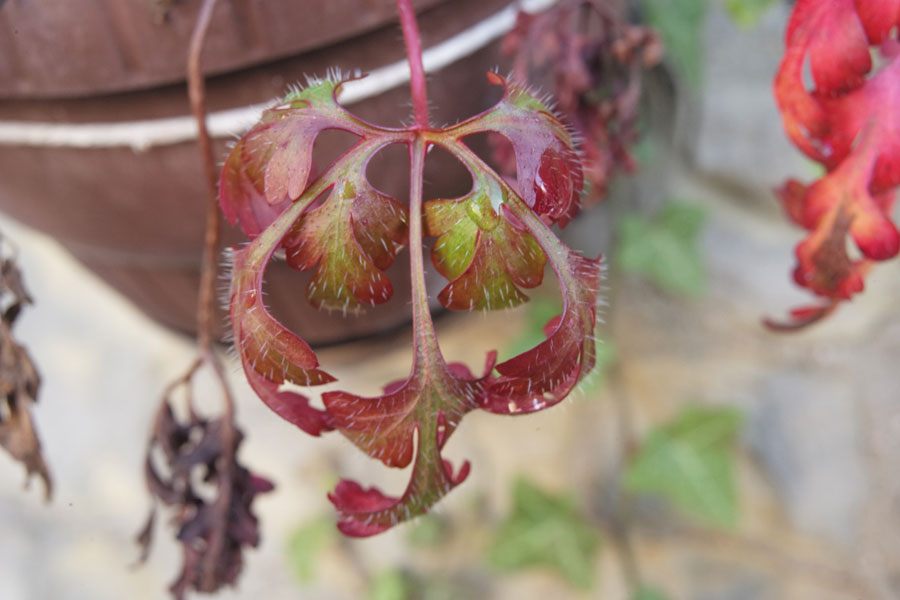 |
|
Distance unknown |
Distance unknowm |
|
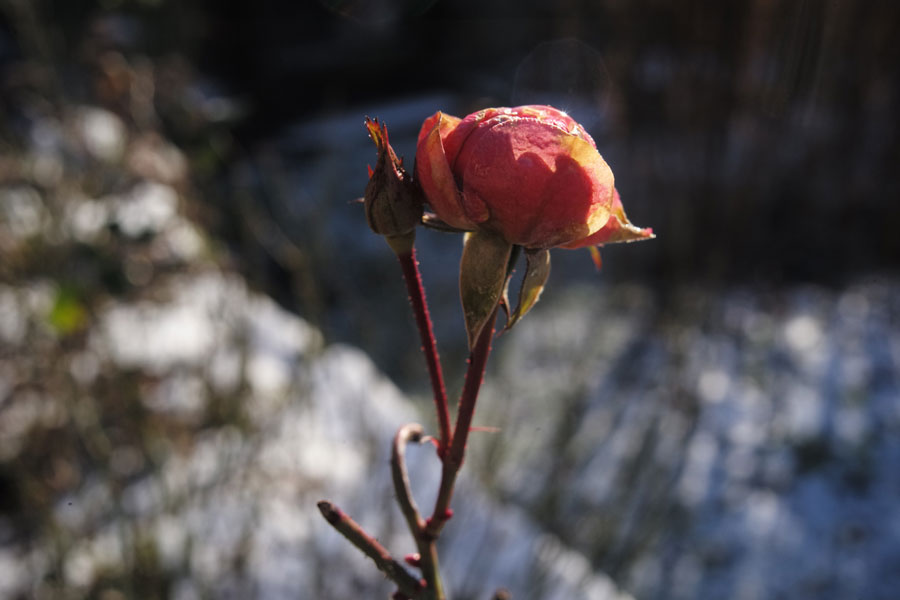 |
 |
|
Distance set to infinity |
Distance set to closest value |
There is not a huge difference between the two distance settings.
Note: For close-up shots you better remove the lens hood to avoid shading.
Conclusions
Disclaimer: I am not a lens expert who sees marked differences between various Leica/Leitz and/or other lenses. I can check for soft corners, find differences in color rendition, and, in rare cases, may discover a "3D look", but that's all. Please regard therefore my conclusions as the verdict of a "layman".
First tests indicated that the lens is somewhat prone to flare if I shoot against the sun.
Tests with this lens at the Ricoh GXR M-mount unit revealed that the corners are a little soft at wide open (f/2.8), but sharpness improves when the lens is stopped down to f/5.6 or f/8. At the center, the lens sems to be quite sharp already wide open. All in all, the photos look overall sharp to me, and I am quite pleased with the results that the M-Rokkor 28mm f/2.8 lens produces on the M-mount unit.
For the full-frame Leica M (Typ 240), the corner issue may be more pronounced, but this has still to be tested.
First attempts with this lens revealed that it exhibits vignetting and a very slight magenta color cast at the shorter borders when used at the Leica M (Typ 240) (all my lenses with a focal length below 50 mm do so). Luckily, the color shading is ususally not discernible on many photos. There are also manual lens settings that reduce vignetting and perhaps color cast (it is hard to see on the test photos). In the end, all this can also be removed with the CornerFix application, if you shoot DNG and prepare a suitable lens profile file for CornerFix.
Finally, despite the lens hood, the lens is somewhat succeptible to flare, even when no sun is shining. This is probably true for many older lenses...
Links
- Olypedia: Leica CL (German): olypedia.de/Leica_CL#Minolta_M-Rokkor_1:2.2C8.2F28_mm
- Article about the Minolta CLE, includes some remarks on the Minolta M-Rokkor 28mm f/2.8 lens: www.cameraquest.com/cle.htm
| 16.01.2025 |

